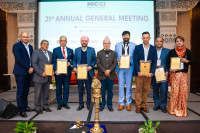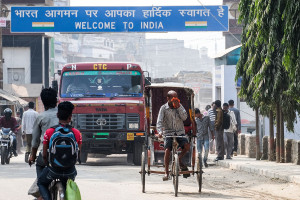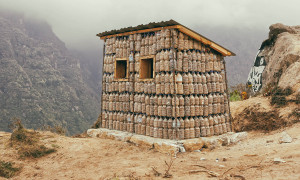Money
TV broadcasts to go digital in five cities
Analogue television broadcasting will be replaced by digital television from Saturday in five major cities as per the deadline fixed by the government for cable service providers to upgrade to the new system.
Analogue television broadcasting will be replaced by digital television from Saturday in five major cities as per the deadline fixed by the government for cable service providers to upgrade to the new system.
However, subscribers with an analogue cable connection will continue to receive television broadcasts as the old system will be removed only gradually.
From Saturday, cable service providers will start phasing out analogue broadcasts in Kathmandu, Lalitpur, Pokhara, Biratnagar and Birgunj.
The Ministry of Information and Communication (MoIC) has said that the licences of cable service providers who do not start the process of digitization will not be renewed, something which has to be done annually.
Strict monitoring will be conducted to ensure that the government’s decision is fully implemented within the near future.
Service providers have said that they will provide incentives to their customers to upgrade to digital besides slashing the number of analogue channels so they will want to keep in step with the new technology.
Consumers switching to digital service will have to connect a set-top box to their television set. They will enjoy high-definition television, which means a clearer picture and higher quality sound.
“We have formed a committee comprising of all the stakeholders including cable operators, and that will play a proactive role in implementing the decision,” said Mahendra Man Gurung, secretary at the MoIC. “We will gradually implement the decision.”
Though the government began the process of migrating to digital television by amending the National Broadcasting Act 1993 and National Telecommunications Act 1995 in 2012, progress has been slow.
The initiative is in line with the 2017 deadline set by the International Telecommuni-cation Union of the United Nations (UN) for countries to go digital.
In accordance with this requirement, the MoIC directed cable operators to digitize their service within three years. Issues like lack of preparation, the Gorkha earthquake and subsequent trade blockade by India obstructed the government’s plan.
After a series of setbacks, the government finally reached a decision and directed cable TV operators to switch to digital from April 29. In the first phase, the provision will be applicable to cable operators in Kathmandu, Lalitpur, Pokhara, Biratnagar and Birgunj. The government aims to extend the cable digitization process to 58 other towns by mid-November 2017 and across the country by mid-April 2018.
According to a rough estimate provided by the Federation of Cable TV Associations of Nepal, around 1 million set-top boxes will be required to upgrade to digital television in the five cities. It is estimated that there are around 3.2 million cable subscribers in the country currently.
Considering that all cable operators aren’t capable of switching to a digital network, the digitization drive will encourage small operators to merge with bigger ones or create a consortium which will also help increase the number of big service providers with a large customer base.
The government will be able to find out the actual number of cable service users once the system is digitized. Since people usually split their analogue connection so that different programmes can be watched on several TV sets at the same time, it has been difficult for the government and service providers to ascertain the actual number of users.
“The sector will become transparent and the state coffers too will benefit greatly,” said Gurung, adding that the main purpose behind the drive was to improve the TV viewing experience for the public and manage the sector efficiently.




 9.12°C Kathmandu
9.12°C Kathmandu













